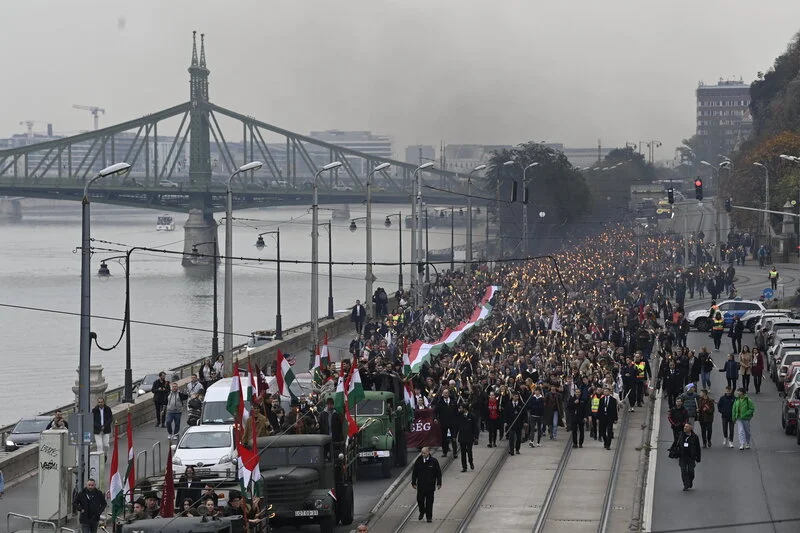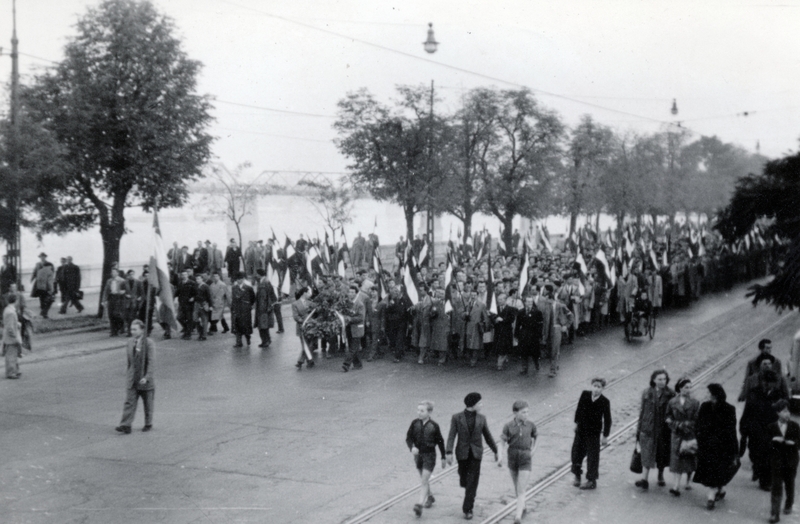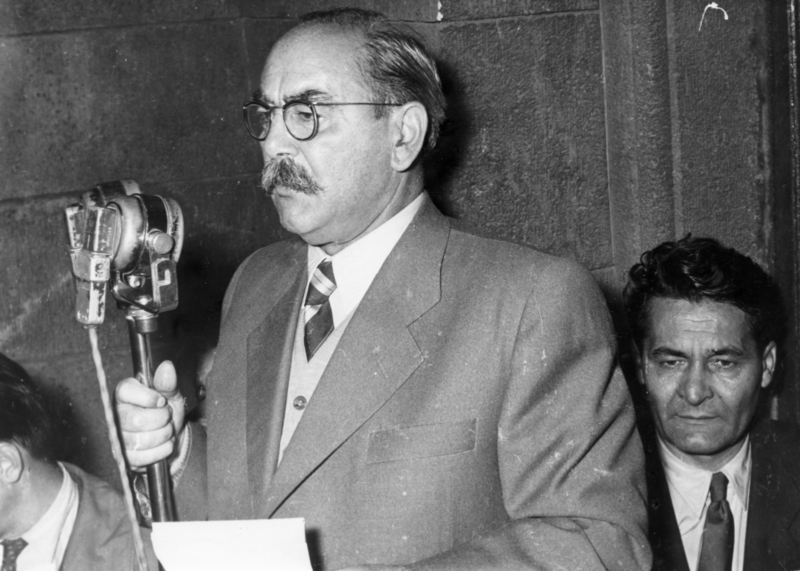PHOTOS, VIDEO: what do Hungarians celebrate on 23 October?

The national day of Hungary is 20 August when Hungarians living anywhere in the world celebrate the foundation of the country. On 15 March, they celebrate the start of the 1848-49 revolution and the birth of modern, civic Hungary. On 23 October, the celebrations are about the brave anti-Soviet revolution of the people in 1956. Below you may read what happened then.
Thanks to the Yalta Pact between the Soviet Union and the Anglo-Saxon powers, the UK and the USA did not create the Balkans front behind the Germans and Moscow got the chance to “liberate” East and part of Central Europe from Nazi German rule. The Soviets arrived in Hungary in 1944 and remained here until 1991. However, after the world war, that was not so obvious.
The democratic opposition of the Nazis in Hungary tried to create a democratic, civic, neutral Hungary after 1945. But the Soviet army remained and the Moscow-backed communists gradually reduced democracy. They chased away most of the leaders of the democratic organisations and introduced a Soviet-type Stalinist regime in 1948.

The Rákosi-era was a time of gigantic and expensive industrial and military investments and the personal cult of the leader, Mátyás Rákosi. They prepared for the Third World War but wasted all their resources on loss-making developments. To keep people’s discontent at bay, they used many forms of oppression. Not surprisingly, Rákosi and his allies quickly became unpopular. When Stalin died, Imre Nagy took the lead of the Communist party and the regime. He was a leader of the Communist party doing a lot to destroy the democratic opposition but was a communist reformist at the same time. He closed the internment camps and reduced the power of the State Protection Authority (ÁVH, Államvédelmi Hatóság). Furthermore, he introduced measures aiming to make life easier for the crowds.
However, Rákosi remained in the country and sought to claim back his power. When his opponents weakened in Moscow, he managed to get back his seat and push Nagy out of the leadership. But the crowds did not forget and wanted Nagy to lead the country because they believed their life would be better under his prime ministership.

The 20th Congress of the Soviet Communist Party condemned the Stalinist dictatorship which had a considerable negative effect on the dictators of the satellite states like Hungary and Rákosi. Another change in the Kremlin resulted in Rákosi’s resignation in the spring of 1956. Meanwhile, in Poland, protests started among the workers in Poznań and the “local Imre Nagy”, the reformist Władysław Gomułka came to power. That event helped those who demanded Nagy’s return to Hungary.
On 6 October, 200,000 people protested against the Stalinist leadership of Hungary on the reburial of former Communist minister of interior (and mass murderer) László Rajk. On 16 October, the Hungarian university students formed an autonomous youth organization (MEFESZ) and sent their delegates to the University of Technology and Economics in Budapest. Parallelly, protests started in several Polish cities on 19 October.
The university delegates worded demands beyond the claims of the Hungarian anti-Stalinist Communists. For example, they insisted the Soviet troops leave the country. They wanted to read out their demands on the radio but were rejected to do so.

On 23 October, huge protests started in the capital. Tens of thousands of people gathered together at the statue of Polish freedom fighter József Bem to express solidarity towards the Polish workers’ demonstrations. In the evening, the crowd grew to 200,000 near the Parliament. Imre Nagy showed up but gave a weak speech.

Meanwhile, others toppled the Stalin monument in the City Park, a symbol of the Communist repression in Hungary. Some protesters wanted again to read out their demands on the Radio. Fires were shot, and an uprising started in Budapest against the armed agents of the Communist State Protection Authority. On 23 October, the Soviet troops in Budapest did not take part in that conflict yet.
The people on the streets started the fight for a more democratic, free and civic Hungary.
Source:




